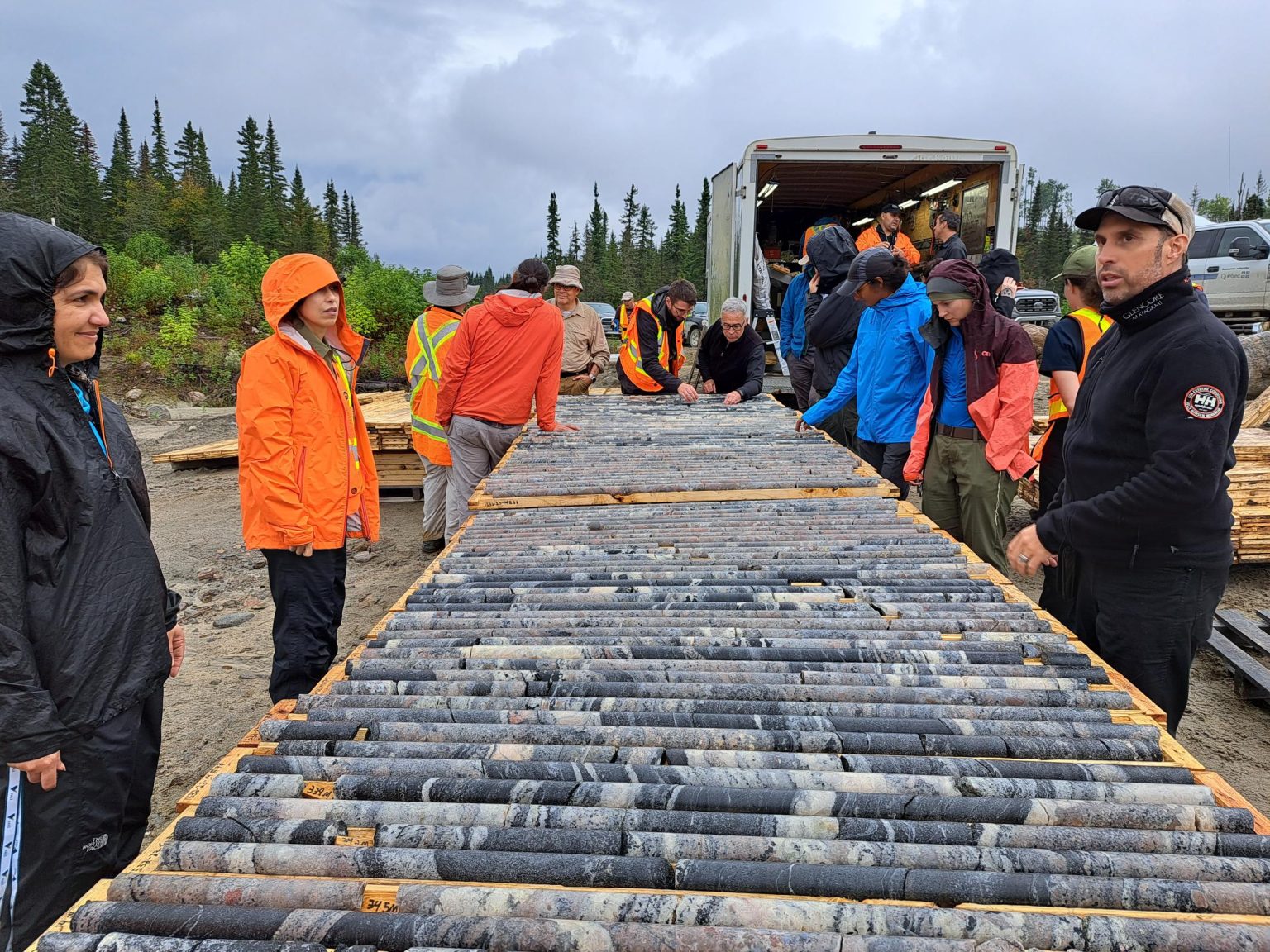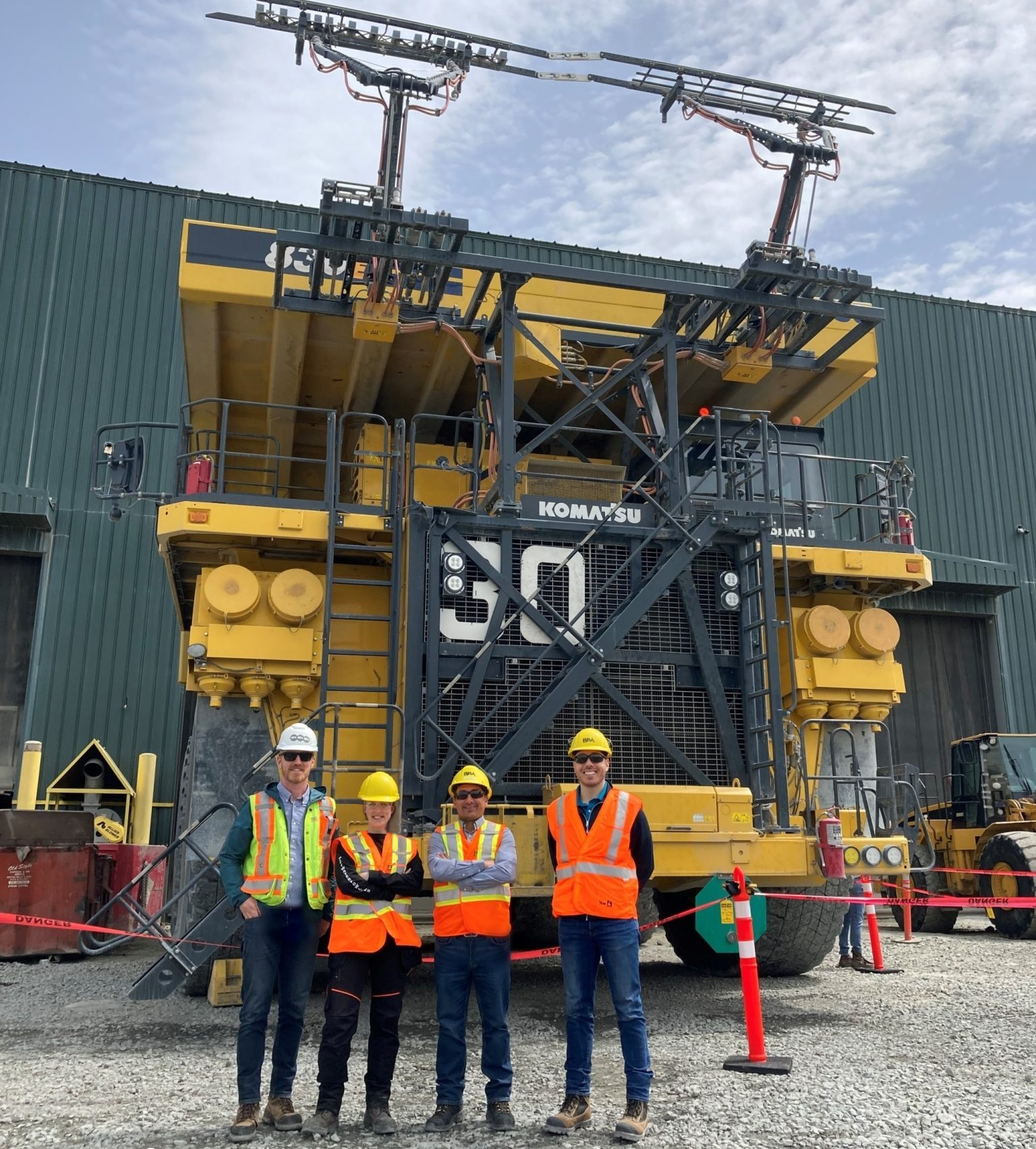Getting to CMIC’s zero waste vision
As executive director of the Canada Mining Innovation Council (CMIC), Carl Weatherell has a lot of conversations with people in the industry about innovation.
But those conversations often have to start by defining terms – specifically by distinguishing innovation from research.
“They are not the same thing, yet the industry and everybody around it still confuses them and connects the two,” Weatherell says. “Research is knowledge discovery – it requires a significant amount of money to discover new ‘stuff.’ Innovation actually does the opposite: it creates wealth.”
That confusion is one of the reasons the mining sector doesn’t innovate as well as it should. In Canada, funding goes into research with the expectation that innovation will be the result, Weatherell says.
“What has happened is we have all these funded partnerships, but there are few products, little innovation, no substantive change in the industry because of the way the innovation system has been set up. We fund innovation under the guise of research, and the result is little innovation.” A recent report by the Council of Canadian Academies even states that in Canada research rarely leads to innovation, Weatherell adds.

A screenshot of the water quality
Knowledge Hub. CREDIT: CMIC
Another issue is that people in the mining sector confuse innovation and optimization, such as advances in technology like automation.
“Innovation should drive a multiple order of magnitude return on your investment and we’re not doing that at the levels we need to.”
There may still be confusion about what innovation is, but it’s become clear why the mining sector needs a fundamental transformation. Weatherell points to the big, common and seemingly intractable challenges mining companies are facing: lower grades, deeper, more complicated and harder to find deposits, energy challenges, social licence issues, etc.
“Because you can’t take any one of them individually, these big challenges are escaping or getting past our ability to deal with them. In other words, that innovation gap is expanding and it’s expanding rapidly.”
As a result, productivity has declined 3.5% a year for a decade, Weatherell says, whereas productivity in other industries is trending upwards.
So how do we solve these problems? “The first thing we need to do is collaborate as an industry and look at these challenges as an industry across Canada and globally.”
While the industry has been the source of truly innovative ideas and technologies – processes like solvent-extraction electrowinning and smelting processes, for example – it hasn’t gone far enough to transform the industry.
“The way we’ve been doing this obviously hasn’t worked,” Weatherell says.
“Individual companies doing their own things, individual technology organizations, research organizations, innovation organizations, government labs, suppliers, haven’t made big dents in these challenges and again these macro-economic trends are showing that that is the case.”
That’s where CMIC comes in.
Formally established in 2009 by industry, government and academia, CMIC’s role is to catalyze innovation by connecting the whole mining ecosystem – mining companies, service companies, research organizations, startups, and others – to solve the big challenges that threaten the industry.
Zero waste vision
To get all the players in the sector pulling in the same direction, CMIC adopted something other industries such as software, manufacturing, aerospace and defence have done: technology road maps.

An example of the preliminary
common earth model developed by
Footprints and Mira Geoscience for the
Highland Valley Copper research site.
CREDIT: CMIC
CMIC’s road maps outline a radical collective vision for where the industry wants to be in 15 or 20 years.
“Our vision is to transform mining towards a zero waste industry,” Weatherell explains. “So how do you get there?”
Starting from that end point, the technology road maps work backwards to show what can be done now, where the gaps are and how the industry can move forward.
The road maps target transformative changes in the “platforms” that make up mining. For example, the current conversation around tailings is mostly around how to manage them as operations get bigger and produce more of them. But using the platform approach, you would tackle how not to produce tailings at all – a fundamental change in the way mining is done.
The road maps also help to get players focused on delivering one piece of the puzzle to make collective progress much faster, rather than doing their own thing.
Another tenet of CMIC is the concept of open innovation – something that the mining sector is only starting to do.
“Open innovation means you have to share intellectual property amongst consortium members and collaborators at a much higher level. A secondary output to that is that you’re actually going to create new products or solutions that are potentially usable in other markets.”
Weatherell points to the consortium of 13 oil sands companies, Canada’s Oil Sands Innovation Alliance (COSIA), as an example.
In addition to looking outside of your own company for solutions open innovation involves looking outside of your industry.
For example, one of the technologies CMIC is looking at applying to underground mining is actually a defence weapon that was developed with funding from the European Union.
“If we keep going down a myopic path and keep trying to reinvent the wheel to solve these things, well I’m sorry, a lot of this stuff already exists somewhere else: let’s use it.”
CMIC PROJECTS
CMIC projects are defined, funded and delivered by member organizations. The organization’s website currently lists more than 55 members ranging from major mining companies, suppliers, associations, governments, universities and more.
CMIC facilitates projects in four technical areas geared at helping the industry get to zero waste: exploration, underground mining, energy and processing, and environmental stewardship. A selection of current CMIC projects follows.
Mineral exploration
One of CMIC’s most advanced projects is its Footprints project with NSERC (Natural Sciences and Engineering Research Council of Canada), which began in 2013. The five-year, $13-million project brought together the largest multidisciplinary exploration geoscience consortium in North America. The consortium is working on developing novel methods for integrating multiple exploration data sets (geophysical, mineralogical, geochemical, etc.) that currently can be layered, but not truly integrated. The project uses software platforms that were originally developed for aerospace and the financial services industry and should enhance exploration methods as well as answering fundamental questions about the origins of large-scale, ore-forming systems.
Energy & processing
Only 5% of the energy used to grind ore is actually used to break apart the rock, making the process 95% energy inefficient.
CMIC has a project in the lab testing phase looking at replacing ball mills. Compared to HPGR, this technology, which Weatherell describes as a game changer for new mines, could reduce energy consumption by 50-60% and capex in the mill by 20-30%. CMIC is supporting the development of a prototype, which is slated to begin later this year. After that’s complete and tested for a year, a full-scale demo would follow. “We’ve already got mining companies lined up saying we want to test it,” Weatherell says. If the technology works, CMIC is aiming to facilitate commercialization within five years.
Environmental stewardship
CMIC has launched a Knowledge Hub in British Columbia to put water quality data online in geospatial format. One of the challenges for mining companies is that base line water quality data that they must collect and submit to a regulatory body isn’t easily available, although it is supposed to be public.
The hub, which has been up and running for about a year and a half, has transitioned from the minimum viable product stage to a prototype and provides access to 15 million water quality data points in British Columbia. The intent is to roll it out across the country. In future, the program could potentially to be used to curate or provide the portal for water quality monitoring data that is submitted to regulators.
CMIC has also recently launched a project to support the development of remote, real-time sensors for water quality monitoring. One of the technologies being pursued leans on genomics as a tool to create sensors from bacteria – another example of open innovation at work.
Underground mining
As more battery-powered vehicles are being developed and offered in underground mining, CMIC is working on standardizing the new technology. As it stands, the technology that is available from different companies is not compatible: in order to use vehicles from two different companies at one mine, two sets of infrastructure would need to be installed to charge the batteries. Working with the Global Mining Standards & Guidelines Group and the majority of the mining companies and mining suppliers in the battery-electric vehicle space in Canada and internationally, this partnership has completed guidelines for the technology in six months – a process that normally would take two or more years. In underground mining CMIC is focused on transforming the industry from a batch-dumb-carbon based process to a continuous-smart-electric process. For more information see http://cmic-ccim.org/.





Comments